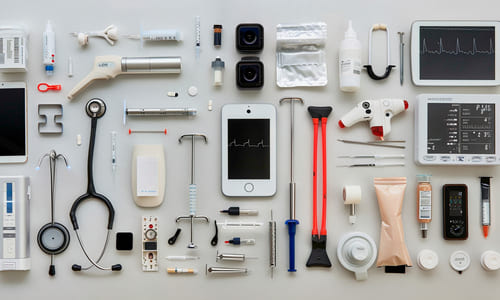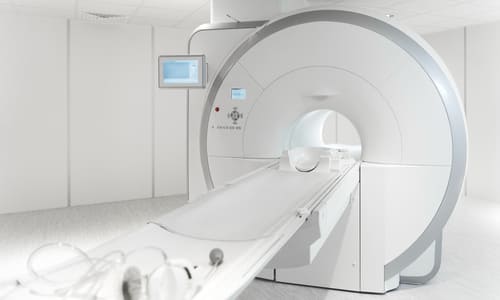ISO 9001 Clause: 7.1 Resources
7.1.1 General
7.1.2 People
7.1.3 Infrastructure
7.1.4 Environment for the Operation of Processes
7.1.5 Monitoring and Measuring Resources
7.1.6 Organizational Knowledge
What is clause 7.1 of ISO 9001 all about?
ISO 9001 clause 7.1 focuses on ensuring that an organization has the right resources in place to support its Quality Management System (QMS). This clause emphasizes the importance of providing and maintaining the necessary infrastructure, environment, and resources—such as people, equipment, and technology—to consistently meet quality objectives and deliver products or services that satisfy customer expectations.
Clause 7.1 outlines the key aspects of resources, including:
- Human resources (competent personnel),
- Infrastructure (facilities, equipment, and systems),
- Work environment (safe and suitable conditions),
- Monitoring and measurement resources (equipment for tracking performance),
- Organizational knowledge (internal and external information to support operations).
In short, Clause 7.1 ensures that organizations are fully equipped to manage their QMS efficiently and maintain the quality of their products or services.
ISO 9000 Quality management systems — Fundamentals and vocabulary
3.5.2 infrastructure
organization system (3.5.1) of facilities, equipment and services (3.7.7) needed for the operation of an organization (3.2.1)
3.5.5 work environment
set of conditions under which work is performed
Note 1 to entry: Conditions can include physical, social, psychological and environmental factors (such as temperature, lighting, recognition schemes, occupational stress, ergonomics and atmospheric composition).
Training Courses



7.1.1 General
Clause 7.1.1 in ISO 9001 focuses on the general requirements for resources within the organization to maintain an effective Quality Management System (QMS). It emphasizes that an organization must determine and provide the resources necessary to consistently meet customer and regulatory requirements, as well as to enhance customer satisfaction. This includes both tangible resources, like equipment and technology, and intangible resources, like knowledge and expertise. The clause ensures that the right resources are available and maintained, allowing the organization to efficiently implement, operate, and continually improve its QMS. Ultimately, it ensures that resources are sufficient to achieve quality objectives and sustain long-term success.
Related Info
7.1.2 People
Clause 7.1.2 of ISO 9001 highlights the need for organizations to provide the right people necessary for the effective operation of their Quality Management System (QMS). This means that your organization must ensure it has enough competent, trained, and skilled personnel to meet customer requirements, maintain product or service quality, and achieve organizational goals. The clause applies to everyone involved in the QMS, including employees at all levels, contractors, and external partners if necessary. Having the right people in place is critical to consistently delivering high-quality results, making this clause essential for building and maintaining an effective QMS.
ISO 9001 clause 7.1.2: People is closely linked to several other clauses in ISO 9001, creating a comprehensive approach to managing and ensuring the competence and effectiveness of the workforce within the Quality Management System (QMS). Here’s how it connects to other key clauses:
Clause 5.3: Organizational Roles, Responsibilities, and Authorities
Clause 7.1.2 is linked to clause 5.3 because it highlights the need for the right people to fulfill clearly defined roles and responsibilities within the organization. Having competent individuals in place ensures that roles are carried out effectively, which supports the overall structure of the QMS.
Clause 7.2: Competence
Clause 7.1.2 naturally connects with clause 7.2, which focuses on ensuring that the people involved in the QMS are competent based on education, training, skills, and experience. While 7.1.2 ensures the organization has the right people, clause 7.2 ensures those people are qualified to perform their tasks effectively.
Clause 7.3: Awareness
Having competent people in place (clause 7.1.2) also ties into ensuring those people are aware of the quality objectives, policies, and expectations under clause 7.3. Awareness ensures that employees understand their role in maintaining the quality system and contributing to the organization’s success.
Clause 7.4: Communication
Effective communication is key to ensuring that people understand their responsibilities and the expectations of the QMS. Clause 7.1.2 links to clause 7.4, which ensures that the right communication methods are in place to keep employees informed, involved, and aligned with quality goals.
Clause 6.1: Actions to Address Risks and Opportunities
Having the right people (clause 7.1.2) is critical for effectively managing risks and opportunities outlined in clause 6.1. Competent personnel are required to implement and monitor risk management strategies, as well as to seize opportunities for improvement.
Clause 8.1: Operational Planning and Control
The connection to clause 8.1 involves ensuring that the right people are in place to manage and control operational processes effectively. It ties into ensuring that the workforce is capable of executing tasks that influence product and service quality.
Clause 9.1: Monitoring, Measurement, Analysis, and Evaluation
Competent individuals are essential for effectively monitoring and measuring performance as required by clause 9.1. The right people must be involved in data collection, analysis, and evaluation to ensure that the QMS meets its objectives and drives continual improvement.
Clause 10.2: Nonconformity and Corrective Action
In the event of nonconformities, the people identified in clause 7.1.2 play a critical role in implementing corrective actions as described in clause 10.2. Ensuring that these individuals are competent and capable of identifying root causes and correcting issues is vital for maintaining QMS effectiveness.
Clause 7.1.2: People is a foundational element of ISO 9001, directly supporting various aspects of the QMS by ensuring that the organization has the right personnel in place. It interacts with clauses focusing on competence, communication, operational control, and corrective actions, helping to ensure that the workforce contributes effectively to the success of the QMS and the achievement of quality objectives.
Dive In

Ensuring Quality in Medical Devices: The Role of Process Validation and Revalidation
[dsm_gradient_text gradient_text="Ensuring Quality in Medical Devices: The Role of Process Validation and Revalidation" _builder_version="4.27.0" _module_preset="default" header_font="Questrial|||on|||||" header_text_align="center" header_letter_spacing="5px"...

ISO 9001 vs. ISO 13485: Understanding the Similarities and Differences
[dsm_gradient_text gradient_text="ISO 9001 vs. ISO 13485: Understanding the Similarities and Differences" _builder_version="4.27.0" _module_preset="default" header_font="Questrial|||on|||||" header_text_align="center" header_letter_spacing="5px"...
ISO 9001 Clauce 7.1.2 & ISO 9000 Clause 2.3.3 Engagement of People
- 5ISO 9000 2.3.3 Engagement of people provides further guidance on staff and their immersion into the QMS
Clauses from ISO 9000: 2.3.3 are all about making sure your people are engaged, competent, and motivated – which directly links to ISO 9001 clause 7.1.2. Having the right people in the right roles isn’t just about hiring them; it’s about keeping them engaged, giving them room to grow, and making sure they feel valued. When your team is empowered and skilled, they’ll be able to contribute effectively to achieving the company’s quality objectives.
2.3.3.1 Statement
- What it’s about: This clause says that having competent, empowered, and engaged people at all levels is key to driving an organization’s ability to create and deliver value.
- How it links to ISO 9001 Clause 7.1.2: Clause 7.1.2 emphasizes having the right people in place to support the Quality Management System (QMS). Engaging those people—making sure they’re empowered and motivated—ensures they contribute effectively to meeting quality objectives, aligning directly with this clause.
2.3.3.2 Rationale
- What it’s about: It explains why engaging people matters. Basically, when you involve and respect everyone in your organization, from top to bottom, they’re more likely to be motivated and contribute to reaching the company’s quality goals. Recognition, empowerment, and developing competence get people engaged in achieving quality objectives.
- How it links to ISO 9001 Clause 7.1.2: You need competent people for your QMS to run smoothly. When people feel engaged, valued, and empowered, they’re more likely to do their jobs well, making it easier to achieve the QMS’s goals. This is a key aspect of ensuring you have the right people in the right roles, which Clause 7.1.2 is all about.
2.3.3.3 Key Benefits
- What it’s about: This clause lists the benefits of engaging people, like:
- Better understanding of quality goals.
- More involvement in improvement activities.
- Personal development and creativity.
- Higher satisfaction and trust within the organization.
- Stronger attention to shared values and culture.
- How it links to ISO 9001 Clause 7.1.2: These benefits tie directly into the need for competent and motivated people (Clause 7.1.2). When your employees are more involved, satisfied, and aligned with the company’s quality culture, they perform better. This makes it easier to meet customer requirements and maintain the QMS.
2.3.3.4 Possible Actions
- What it’s about: This section suggests ways to engage people effectively:
- Communicate the importance of individual contributions.
- Involve people in improvement activities.
- Encourage open discussions and sharing of knowledge.
- Empower people to take initiatives without fear.
- Recognize and reward people’s contributions.
- Enable self-evaluation against personal objectives.
- Conduct surveys to measure and improve satisfaction.
- How it links to ISO 9001 Clause 7.1.2: These actions are exactly what’s needed to make sure the people in your QMS are competent and engaged. When employees are empowered, recognized, and encouraged to improve, they’re more likely to perform their roles effectively, which is the heart of Clause 7.1.2. It’s all about making sure your team has the skills, motivation, and support to do their best work.
7.1.3 Infrastructure
Clause 7.1.3 of ISO 9001 focuses on the infrastructure required to support an organization’s Quality Management System (QMS). Infrastructure refers to the physical and organizational structures needed to operate effectively, including buildings, equipment, technology, and supporting systems. The organization must ensure that its infrastructure is appropriate for achieving quality objectives, maintaining consistent product or service quality, and meeting customer expectations.
This clause highlights the importance of maintaining and managing infrastructure to prevent disruptions and ensure smooth operations. Whether it’s factory machinery, office spaces, IT systems, or transportation networks, having a reliable infrastructure ensures that all processes can be performed efficiently and without errors. Regular maintenance, upgrades, and reviews of the infrastructure are essential to prevent breakdowns or delays, ultimately supporting the overall effectiveness of the QMS.
Here are the ISO 9001 clauses that are relevant and linked to Clause 7.1.3: Infrastructure:
Clause 6.1: Actions to Address Risks and Opportunities
Infrastructure plays a key role in mitigating risks and seizing opportunities. For example, maintaining and upgrading equipment can reduce the risk of failure or breakdowns, ensuring operational continuity.
Clause 7.1.4: Environment for the Operation of Processes
While 7.1.3 focuses on physical infrastructure, Clause 7.1.4 deals with the environmental conditions (such as temperature, cleanliness, or safety) needed for optimal operations. Both are about ensuring the proper conditions for processes to run smoothly and meet quality standards.
Clause 7.1.5: Monitoring and Measuring Resources
Clause 7.1.5 involves ensuring that monitoring and measuring equipment are appropriate and maintained, which ties into the broader need for a well-managed infrastructure. For example, having accurate and calibrated equipment is essential for consistent quality control.
Clause 8.1: Operational Planning and Control
This clause emphasizes that organizations must plan and control their operations, and infrastructure is a key part of that. Without the right infrastructure, processes can’t run effectively, which could disrupt operations and impact the ability to meet customer requirements.
Clause 8.2: Determination of Requirements for Products and Services
Understanding customer needs for products or services might influence infrastructure decisions. For example, new customer demands may require upgrades in technology or equipment to meet higher standards of production.
Clause 8.5.1: Control of Production and Service Provision
Infrastructure is essential for the control of production and service provision. Without the right tools, machinery, or technology, production and service delivery can’t be effectively controlled or managed, impacting the quality of output.
Clause 8.5.2: Identification and Traceability
Infrastructure, such as IT systems or production equipment, often supports traceability and identification processes. Whether it’s tracking raw materials or finished products, a reliable infrastructure ensures traceability is maintained throughout the production cycle.
Clause 9.1.1: Monitoring, Measurement, Analysis, and Evaluation
To effectively monitor and measure the performance of processes, an organization needs reliable infrastructure, such as monitoring devices, software, or equipment. If the infrastructure is faulty or insufficient, the ability to gather accurate data and analyze performance is compromised.
Clause 10.2: Nonconformity and Corrective Action
In cases where infrastructure failures contribute to nonconformities, corrective actions (as defined in Clause 10.2) must address these infrastructure issues. For example, if a machine breakdown leads to defective products, the infrastructure itself may need corrective action.
Clause 10.3: Continual Improvement
As part of continual improvement, an organization may identify opportunities to upgrade or enhance its infrastructure to support better performance, reduce waste, or increase efficiency.
Clause 7.1.3 is linked to various other clauses in ISO 9001 that focus on ensuring that processes run smoothly, products meet quality standards, and customer expectations are satisfied. From risk management to operational control, having a solid and well-maintained infrastructure is critical for the overall success of the Quality Management System.
Dive In

ISO 17025, Laboratories, and AI: A New Era of Compliance and Innovation
[dsm_gradient_text gradient_text="ISO 17025, Laboratories, and AI: A New Era of Compliance and Innovation" _builder_version="4.27.0" _module_preset="default" header_font="Questrial|||on|||||" header_text_align="center" header_letter_spacing="5px"...

The Future of ISO/IEC 17025 and Its Impact on the Testing and Calibration Industry
[dsm_gradient_text gradient_text=" Looking Ahead: The Future of ISO/IEC 17025 and Its Impact on the Testing and Calibration Industry" _builder_version="4.27.0" _module_preset="default" header_font="Questrial|||on|||||" header_text_align="center"...
7.1.4 Environment for the Operation of Processes
Clause 7.1.4 of ISO 9001 emphasizes the importance of maintaining an appropriate environment for operating processes that impact the quality of products and services. This environment goes beyond just the physical workspace – it includes factors such as temperature, humidity, cleanliness, noise levels, lighting, and even workplace culture or safety. The organization must determine what environmental conditions are necessary for effective operations and ensure these are maintained and controlled.
This clause highlights that not only physical conditions but also factors like psychological and social environments, such as employee well-being and morale, can impact the quality of work. Ensuring a positive, safe, and supportive environment is key to ensuring that employees can perform their tasks efficiently, contributing to the consistent delivery of high-quality products and services. Maintaining the right environment reduces the risk of errors, boosts productivity, and ultimately supports the overall effectiveness of the Quality Management System (QMS).
7.1.5 Monitoring and Measuring Resources
Monitoring & Measuring Resources for ISO 9001: Keeping It Accurate
When it comes to ISO 9001, monitoring and measuring resources is all about making sure you have the right tools and equipment to deliver quality products and services that meet customer expectations. Think of it like making sure your gadgets are calibrated, up-to-date, and in perfect working order, so every measurement you take is spot on. This process ensures that what you’re offering is exactly what your customers need – no guesswork, just precision.
How It Works
- Determine Resources: First up, you’ve got to figure out what resources (like equipment, tools, or software) are needed to get accurate measurements for your products and services.
- Provide Resources: Once you know what you need, you’ve got to acquire those resources and make sure they’re ready for action.
- Measure Against Requirements: Now, use those resources to check your products or services against the specific quality requirements outlined by ISO 9001.
- Document Everything: Lastly, record all measurements for future reference. Documentation is key for ongoing monitoring and ensuring consistency.
Why It’s Important
To nail ISO 9001 compliance, your measurement equipment—whether it’s physical machines or software – must be calibrated, validated, and properly maintained. This means regular checks and ensuring all tools are in top condition. Accurate measurements reduce the risk of errors, keep your operations running smoothly, and maintain customer trust by consistently delivering what was promised.
By staying on top of your monitoring and measuring resources, you’re not just following the rules—you’re setting your business up for long-term success with reliable quality and performance.
Measurement Traceability: Why It’s a Big Deal in ISO 9001
When it comes to monitoring and measuring in ISO 9001, you can’t just eyeball things—accuracy is everything. That’s where measurement traceability comes in. It’s the process of making sure that the equipment you’re using to measure products, services, or resources is properly validated and calibrated, so you can trust the results. This helps your organization stay confident that everything being measured is legit and meets ISO requirements.
How It Works
- Calibrate Before Use: Your measurement tools need to be calibrated regularly before use. And it’s not just a random check—this must be done according to specific standards.
- Follow Manufacturer Instructions: Adjust those tools as per the manufacturer’s guidelines to make sure everything is in top shape for accurate measurements.
- Clear Calibration Status: Operators need to clearly see the calibration status on the machine. This means you know whether the equipment is good to go or needs adjusting.
- Protect From Unwanted Changes: Once the equipment is set, it should be protected from unnecessary adjustments during measurements. The idea is to lock things in place so the results stay accurate.
- Handle with Care: If you’re moving equipment, repairing it, or putting it away, make sure it’s handled carefully to avoid any damage that could mess with its accuracy.
- Non-ISO Devices: If you’re using equipment that doesn’t meet ISO standards, it needs to be checked against another ISO-compliant device. Otherwise, it can’t be trusted for accurate measurements.
- Certified Calibration: Calibration must be done by a certified ISO provider. No cutting corners here—only trained and certified personnel should be touching those settings.
- Document Everything: Keep solid records of all calibrations and verifications. If something goes wrong, these records are your proof that you did everything right.
What About Software?
If you’re using software to take measurements, it has to be validated before it’s used—and not just once. The software needs to be maintained and re-validated whenever necessary to keep things accurate.
Recap of Key Steps
- Regular calibration before use
- Adjustments following manufacturer’s instructions
- Clearly marked calibration status
- Protection from unwanted adjustments
- Safe handling during repairs or moves
- Non-ISO tools must be checked against ISO-compliant ones
- Calibration by ISO-certified providers
- Maintain calibration and verification records
- Software validated and re-validated
Why Bother?
Sure, all these steps might sound like a lot of work, but here’s the deal: accurate measurements mean better control over your business operations. By following these guidelines, you can trust the data you’re working with, avoid mistakes, and keep everything running smoothly. Plus, being able to prove you’ve got everything calibrated and verified shows that you’re on top of things, keeping your company compliant with ISO standards while boosting customer confidence.
7.1.6 Organizational Knowledge
Clause 7.1.6 of ISO 9001 focuses on organizational knowledge – the know-how that your company needs to run efficiently and meet customer requirements. This can include everything from industry best practices, customer preferences, and lessons learned from past projects to technical knowledge and skills possessed by employees. Essentially, this clause ensures that organizations identify and maintain the critical knowledge required to operate processes effectively and ensure the quality of their products and services.
This knowledge can come from internal sources (like employee experience or internal data) or external sources (like industry reports or customer feedback). Additionally, organizations must consider how to retain this knowledge, especially in situations where key employees leave or technology changes. The goal is to avoid knowledge gaps that could lead to inconsistent quality or operational inefficiencies. By managing organizational knowledge, companies can adapt to change, innovate, and continuously improve their Quality Management System (QMS).
Tools for Organizational Knowledge Management
- Knowledge Management Software (e.g., SharePoint, Confluence, Notion) – Centralized platforms to store, share, and manage company knowledge, making it easily accessible to employees.
- Document Management Systems (e.g., Google Drive, Dropbox) – Tools to organize, store, and archive important documents, standard operating procedures (SOPs), and records, ensuring easy retrieval.
- Learning Management Systems (LMS) (e.g., Moodle, TalentLMS) – Platforms for delivering, tracking, and managing training programs and learning materials to upskill employees and maintain organizational knowledge.
- Intranets – Internal communication platforms that act as knowledge hubs, providing employees with access to company-wide resources, updates, and knowledge.
-
Customer Relationship Management (CRM) Systems (e.g., Salesforce, HubSpot) – CRMs help store and analyze customer data, preferences, and interactions, ensuring that this critical knowledge is retained and easily accessible across teams.
-
Wikis & Internal Knowledge Bases – Collaborative spaces where employees can contribute and update knowledge on best practices, company processes, or lessons learned.
-
Version Control Systems (e.g., Git, SVN) – Tools that manage and track changes to documents or software, ensuring teams work with the latest versions and preventing the loss of critical knowledge.
-
Enterprise Resource Planning (ERP) Systems (e.g., SAP, Oracle) – ERP systems centralize business processes and data, integrating knowledge across departments and ensuring consistent information flow.
Methodologies for Organizational Knowledge Management
-
Knowledge Audits – Regular audits to identify what knowledge exists, where gaps might be, and which areas need improvement. This ensures the organization knows where its strengths and weaknesses lie.
-
Communities of Practice – Groups of employees across departments that share knowledge and experiences to foster learning and innovation in specific fields or expertise areas.
-
Knowledge Mapping – A visual tool to identify where critical knowledge resides within the organization, whether it’s in documents, systems, or within people’s heads.
-
After-Action Reviews – A structured review process after a project or event to discuss what worked, what didn’t, and what can be improved. The lessons learned are then documented for future reference.
-
Mentorship and Cross-Training Programs – Pairing less experienced employees with more experienced ones ensures that important knowledge is passed down, preventing loss when employees retire or leave.
-
Storytelling – Sharing lessons and experiences through storytelling can make complex information more digestible and relatable, reinforcing key learnings.
-
SWOT Analysis – Analyzing organizational Strengths, Weaknesses, Opportunities, and Threats can provide insights into areas where knowledge is lacking or needs to be reinforced.
-
Knowledge Transfer Sessions – Formal sessions where employees transferring roles or leaving the company document their knowledge and pass it on to successors.
Good Practices for Organizational Knowledge Management
-
Encourage a Knowledge-Sharing Culture – Foster an environment where employees are encouraged to share their knowledge openly without fear of losing relevance.
-
Document Critical Knowledge – Ensure that essential knowledge is documented and regularly updated. This includes processes, lessons learned, and expert insights, so it’s available even if key employees leave.
-
Regularly Update Knowledge Repositories – Keep knowledge systems up-to-date by regularly reviewing and revising documents, wikis, and databases to ensure accuracy.
-
Promote Continuous Learning – Encourage ongoing employee education and training to ensure that organizational knowledge grows and evolves with industry changes.
-
Retain Institutional Knowledge – Develop succession planning and knowledge-retention strategies for key employees to ensure their expertise is passed on before they exit the company.
-
Leverage External Knowledge – Stay connected with industry trends and innovations by attending conferences, networking with experts, and incorporating external research or data.
-
Feedback Loops – Use feedback from customers, employees, and stakeholders to improve knowledge systems. Continuous feedback ensures the relevance and effectiveness of the knowledge being managed.
-
Establish Clear Ownership – Assign clear ownership of knowledge management tasks. Ensure specific individuals or teams are responsible for maintaining and updating critical organizational knowledge.
-
Gamification of Knowledge Sharing – Use gamification techniques (e.g., quizzes, badges, leaderboards) to incentivize employees to contribute to knowledge bases or participate in knowledge-sharing activities.
-
Monitor and Measure Knowledge Management Efforts – Regularly evaluate the effectiveness of your knowledge management practices through surveys, performance metrics, or audits, and make improvements as needed.
Conclusion
ISO 9001 Clause 7.1 ensures that organizations have the necessary resources in place to effectively implement and maintain their Quality Management System (QMS). This clause emphasizes the importance of a comprehensive approach to resource management, covering areas like people (7.1.2), infrastructure (7.1.3), environment (7.1.4), monitoring and measuring resources (7.1.5), and organizational knowledge (7.1.6). By ensuring that all these aspects are properly managed, organizations can consistently meet quality objectives, maintain operational efficiency, and adapt to changing business needs.
In summary, Clause 7.1 helps create a solid foundation that enables companies to deliver products and services that meet both customer and regulatory requirements, driving continual improvement and long-term success. Properly managing resources is crucial for ensuring the effectiveness of the QMS and for achieving sustainable growth.
Wanna know more? Let's dive in!
Your AI Ready for the Future? Inside the New AI Maturity Model
[dsm_gradient_text gradient_text="Your AI Ready for the Future? Inside the New AI Maturity Model" _builder_version="4.27.0" _module_preset="default" header_font="Questrial|||on|||||" header_text_align="center" header_letter_spacing="5px" filter_hue_rotate="100deg"...
Cooling the Future: How AI Makes Data Centers Greener
[dsm_gradient_text gradient_text="Cooling the Future: How AI Makes Data Centers Greener" _builder_version="4.27.0" _module_preset="default" header_font="Questrial|||on|||||" header_text_align="center" header_letter_spacing="5px" filter_hue_rotate="100deg"...
When Cars Became Code: How AI is Redefining Automotive Production
[dsm_gradient_text gradient_text="When Cars Became Code: How AI is Redefining Automotive Production" _builder_version="4.27.0" _module_preset="default" header_font="Questrial|||on|||||" header_text_align="center" header_letter_spacing="5px" filter_hue_rotate="100deg"...
Supercharged Smarts: How AI Is Rewiring Electric Vehicle Batteries
[dsm_gradient_text gradient_text="Supercharged Smarts: How AI Is Rewiring Electric Vehicle Batteries" _builder_version="4.27.0" _module_preset="default" header_font="Questrial|||on|||||" header_text_align="center" header_letter_spacing="5px" filter_hue_rotate="100deg"...
New Zealand 2025
Duration: 2 weeks Cities: Christchurch, Hokitika, Kaikōura, Westport, Te Waipounamu, Nelson, Timaru Miles Travelled: 30 000Traveling through parts of New Zealand’s South Island offers a rich tapestry of history, landscape, and local character that leaves a quiet...
Resolving Die Peel Issues in an Automotive & Aerospace Electronics Manufacturing Plant
Background A global electronics manufacturer supplying critical components to the automotive and aerospace industries received multiple customer complaints regarding the premature failure of transistor-based power modules. Field analysis revealed that the root cause...
Transforming a Dysfunctional Quality Team in Automotive and Aerospace Manufacturing
Background The quality department of a Tier-1 manufacturer in the automotive and aerospace sectors was expected to ensure strict compliance to both customer and regulatory standards. Instead, it became a bottleneck plagued by poor collaboration, low morale, and high...
Resolving Customer Complaints Related to Electrical Connector Module Failures
Background ElectroTech, a manufacturer of electrical distribution components, including connector modules for power systems, received a major customer complaint regarding intermittent connection failures in one of its core electric product lines. The failures led to...
Singapore 2019
Duration: 3 days Cities: Singapore Miles Travelled: 6,300Visiting Singapore was like stepping into the future while still being surrounded by rich history and culture. From the moment I arrived at Changi Airport, with its indoor waterfalls and lush gardens, I knew...
Hawaii 2015
Duration: 2 weeks Cities: Honolulu Miles Travelled: 7,000Our trip to Hawaii was truly a once-in-a-lifetime experience, filled with breathtaking landscapes, warm hospitality, and unforgettable moments. We stayed in Honolulu on the island of Oahu, where the vibrant mix...
North East England 2024
Duration: 2 weeks Cities: Durham, Beamish Miles Travelled: 200Traveling to North East England offers a unique blend of history, culture, and character that stays with you long after you leave. One of the highlights is the enchanting city of Durham. Its cobbled streets...
Japan 2019
Duration: 2 weeks Cities: Osaka, Tokyo, Hiroshima, Kyoto Miles Travelled: 9,000Japan in spring is pure magic. Spring felt like a moment suspended in time. The cherry blossoms were at their peak, casting a soft pink glow over temple roofs and narrow cobblestone lanes....












